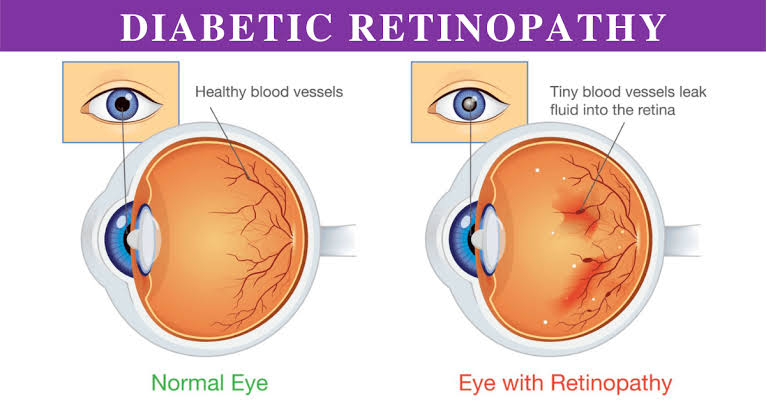DIABETIC RETINOPATHY [DR]
Diabetic retinopathy (DR) is a medical condition in which there is a complication of diabetes. It is a condition whereby high blood sugar levels damage the blood vessels in the retina which leads to blurry vision or total blindness. Majorly, there are two types of Diabetic retinopathy and they are; Non-Proliferative Diabetic Retinopathy (NPDR)which is the early stage and it is characterized by damaged blood vessels and swelling and Proliferative Diabetic Retinopathy (PDR)which is the advanced stage and it is marked by new, fragile blood vessel growth and increased risk of vision loss or blindness.

Symptoms of Diabetic retinopathy
Diabetic retinopathy might cause no symptoms or only mild vision problems at first but it can lead to blindness. The following are some symptoms that can be experienced by someone who has this condition;
- 1. Blurred vision
- 2. Double vision
- 3. Flashes of light
- 4. Floaters (dark spots)
- 5. Vision loss or blindness (if left untreated)
Also there are factors that can contribute to this condition (Diabetic retinopathy) and they are; high blood sugar levels, high cholesterol, smoking, high blood pressure (hypertension), family history, duration of diabetes and so on. Diabetic retinopathy can be developed by anyone who has type 1 diabetes and type 2 diabetes. However, Diabetic retinopathy can always be prevented and properly managed through nutrition. It is very important to go for regular eye check ups, monitor and control your blood sugar and blood pressure levels, and also early intervention for vision problems can help prevent permanent blindness or vision loss.

There are certain foods that may be used to manage and prevent diabetic retinopathy due to the benefit it gives for the eyes and also for diabetes management overall. Fish, leafy green vegetables, the Mediterranean diet, and foods with vitamin A or omega-3 may be most beneficial. Mostly, it is important to see an health-care provider regularly and also go for a regular check-up with an optician and a dietician.
To know more about diabetes, check the following link below;
THE EFFECT OF DIETARY FIBRES ON THE RISK OF TYPE 2 DIABETES






Leave a Reply